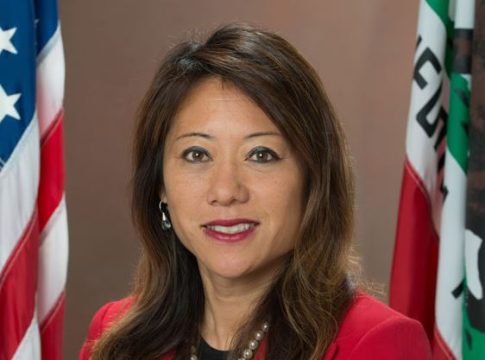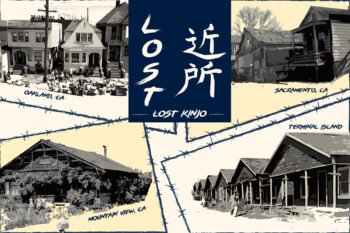By Janelle Kono, AsAmNews Staff Writer
In an op-ed published by the Stanford Daily, Asian American Stanford alumni highlight the often overlooked history of Asian Americans and Stanford. This piece, entitled Stanford’s history is inextricably linked with Asian American history, calls for Stanford to acknowledge its racist historical treatment of Asian Americans as “an opportunity to initiate healing and forge a stronger sense of collective history.”
Even before Stanford opened its prestigious doors, Chinese workers played an integral part in preparing the ground for the University to be built. A widely recognized remnant of their presence is the palm trees that line the entrance of the university on Palm Drive, which Chinese Gardner Jim Mok and a team of Chinese gardeners, were hired to plant. The contribution of these workers are enshrined in the Arboretum Chinese Labor Quarters project put together by the Stanford Archeology Center which has worked to discover and share the lives the contribution of the Chinese laborers from the archeological remains of their time working on the campus.
In addition to contributions of the Chinese laborers, the op-ed also sheds light on the racism early Japanese and Chinese students accepted into Stanford faced. One of these students, a Chinese freshman, tried to move into the dorms at Encina Hall and was thrown out by fellow students. This incident led to the Chinese community funding the construction of a clubhouse as a safe place for Chinese students to live. Unfortunately, the clubhouse was torn down in 1971. As the piece poetically states, “Just as much of Asian American history has been papered over, the community’s tangible heritage on campus was demolished.”

While cited projects such as the plaque built by the Chinese Historical Society honoring the contribution of Chinese workers to the inaugural transcontinental railroad, and the Market Street Chinatown Archaeological Project led by Stanford’s Archaeology Center have worked to preserve the history and accompanying stories of Asian Americans and specifically Chinese laborers, the alumni state that “it is the University’s responsibility as an institution to publicize this history both within the Stanford community and in the public sphere.”
LATEST STORIES
A suitable first step, as discussed by the authors of the piece, is a commemorative sign discussing this history. They also write, “the process undertaken is just as important as the end result. This process should be founded on meaningful consultation and active participation of the community being represented. We ask the University to engage with our community and empower us to be co-authors of our own story.”
AsAmNews staff reached out to two of the main writers of the piece while covering the story, Kevin Hsu and Katie Gee Salisbury.
Q: I know you guys wrote this for AAPI heritage month but did anything else prompt you to write this op-ed?
We began working on this issue in early 2021, and soon after, learned that the University was considering ways to honor Chinese workers at Stanford. However, details of the efforts were hazy: Would there be a physical sign? What story would be told? What language would be used to describe historical events and the people involved? These details matter when we’re talking about how a community is represented.
We’ve had conversations with faculty and staff like Professor Gordon Chang and Professor Barbara Voss, who contributed significantly to a research initiative, called the “Chinese Railroad Workers in North America Project at Stanford University,” which ran for several years. The knowledge they (and other scholars) generated underpins this whole effort. Another Stanford archaeological research project, led by Prof. Voss and Dr. Laura Jones, the University Archaeologist, has been excavating the Arboretum Chinese Laborers Quarters. That has also yielded important information about how the Stanford family, the University campus, and the lives of Chinese laborers intersect. All of the faculty and staff we spoke to were supportive of SAPAAC interfacing with the University; they encouraged us to find out more about any commemorative effort and to give input.
Through that process, we ourselves learned so much about Stanford’s history that we had never been taught when we were students. Few people know that the famous Palm Drive, which serves as the grand entrance to the campus, was actually planted by Chinese gardeners. Most people are shocked to learn that—along with other facts about how Chinese workers helped physically build the campus, or Leland Stanford Sr.’s political positions regarding the Chinese.
Why are these facts so little known, when they are integral to the founding of our alma mater? We felt others needed to know about this incredible history unearthed by Stanford researchers, and decided to broadcast and amplify these narratives to the larger community. By putting it on the record in a university publication, we felt we could let more folks know about these stories and ensure that this knowledge isn’t sidelined.
Crucially, we wanted to call for the university to meaningfully engage with the community in this process. As we mentioned, the op-ed illuminates the relationship between Chinese laborers and Stanford, both the university and the man. It brings attention to this little known and sometimes uncomfortable history, while suggesting how we might grapple with it in the present. We feel University action to commemorate these stories is important—but it’s critical that the Chinese American community, and notably, the descendants of railroad workers, be included in the process. Communities ought to have the opportunity to tell their story and shape how they are represented.
As SAPAAC, we thought it was incredibly important for all these stakeholders to be involved—that this would be more meaningful than a unilateral commemoration. We reached out to community groups, and assembled a collective that includes Connie Young Yu, a community historian who heads a railroad workers descendants’ group, and Doug Chan, the President of the Board at the Chinese Historical Society. They have had immensely valuable perspectives on how to approach this history and suggest possibilities for commemoration.
(Please see the op-ed for more of our thoughts on this. For any kind of commemorative activity in 2022, it really is best practice to consult and meaningfully include the community in the process.)
Q: Has Stanford responded to your op-ed?
We have been in various forms of communication and discussion with people in the Stanford administration about honoring the legacy of Chinese railroad workers and other Chinese laborers at Stanford since early 2021. Our last few meetings have given us reason to hope the University is seriously considering appointing a cross-sectional working group or task force to tackle this specific issue, though no concrete actions have been taken yet. We are still waiting for an update from the University.
We feel there is a great opportunity for Stanford University to model to other institutions of higher learning what a community engagement process appropriate to the 21st century looks like. A structured process around commemoration can include and center minority voices, courageously tackle the past head-on, and produce a positive outcome of educational and heritage value to the public. There’s so much possibility here, if we came together and collaborated!
Q: Is there a tangible move you’d like to see as a part of making up for Stanford’s racist past, in addition to the guidelines you listed at the end of your piece?
This history should be taught to every Stanford student—it’s fascinating, with some hard truths, but there are also eye-opening and whimsical stories, too. It’s all part of our university’s heritage. It would be great for students and campus visitors to understand the depths of this history. Plus, when the story of Stanford becomes more three-dimensional, folks start to see how the University’s early days involved more groups of people of color than they expected. That kind of inclusive storytelling resonates with our generation and is likely to resonate with future generations, too.
Q: Is there anything else you’d like the readers at AsAmNews to know?
Wherever you live or work, there are opportunities to recall the past, to collect memories, to safeguard heritage. You can use these as resources to craft stories for the future. Take the initiative, and don’t be afraid to try. Otherwise, it’s too easy for minorities to be overlooked and forgotten when these narratives are developed. Get involved because our stories matter too—and in the end, this vast treasury of human stories belongs to all of us.
AsAmNews is incorporated in the state of California as Asian American Media, Inc, a non-profit with 501c3 status. Check out our new TikTok account. Find additional content on Instagram ,Twitter and Facebook. Please consider interning, joining our staff, or submitting a story, or making a tax-deductible donation. We are committed to the highest ethical standards in journalism. Please report any typos or errors to info at AsAmNews dot com.









